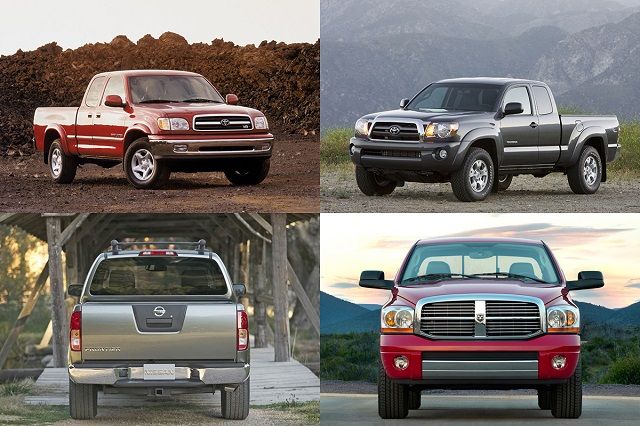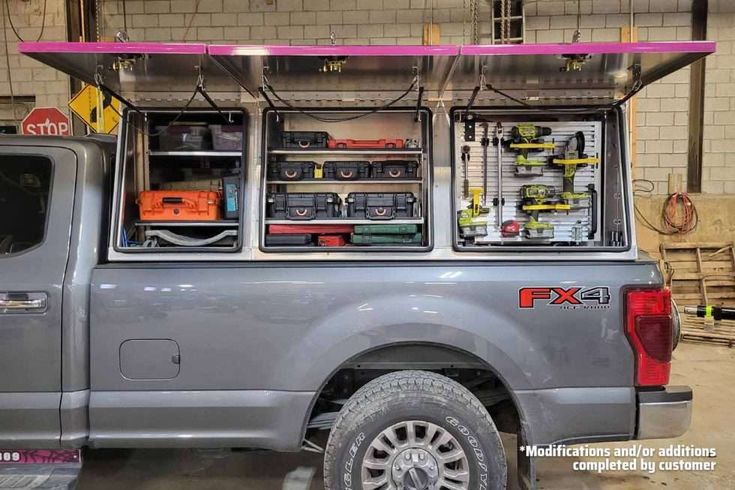80s Dodge Trucks For Sale: A Comprehensive Buyer’s Guide
80s Dodge Trucks For Sale: A Comprehensive Buyer’s Guide cars.truckstrend.com
In an era dominated by sleek, modern pickups, there’s a growing allure for the rugged, no-nonsense workhorses of yesteryear. Among these, the 80s Dodge trucks stand out as an iconic symbol of American automotive history. With their distinctive square-body aesthetics, robust powertrains, and an undeniable sense of utility, these vintage pickups are no longer just relics of the past; they are increasingly sought-after collector’s items, restoration projects, and even reliable daily drivers for those who appreciate their enduring simplicity and character.
This comprehensive guide delves into the world of 80s Dodge trucks for sale, offering insights into why they captivate enthusiasts, what to look for when buying, common pitfalls, and practical advice to help you find your perfect piece of automotive nostalgia.
80s Dodge Trucks For Sale: A Comprehensive Buyer’s Guide
The Enduring Appeal of 80s Dodge Trucks
The 1980s marked a significant period for Dodge trucks, culminating in the introduction of the "Ram" moniker in 1981, effectively rebranding the D-Series (2WD) and W-Series (4WD) pickups. These first-generation Ram trucks, often referred to as "First Gen Rams" or simply "square bodies," represent a golden age of straightforward, durable truck design.
Their appeal lies in several key areas:
- Nostalgia and Aesthetics: For many, these trucks evoke a sense of childhood memories or simpler times. Their boxy, utilitarian design stands in stark contrast to today’s aerodynamic shapes, offering a timeless, muscular aesthetic that turns heads.
- Simplicity and Durability: Built with fewer complex electronics and more mechanical components, 80s Dodge trucks are generally easier to diagnose and repair. Their robust frames, heavy-duty axles, and proven engine designs (like the legendary Slant Six, 318, and 360 V8s) were engineered for hard work and longevity.
- Affordability (Relative): While pristine examples can fetch a premium, many 80s Dodge trucks remain relatively affordable compared to their Ford and Chevy counterparts of the same era, making them an accessible entry point into classic truck ownership.
- Utility: These trucks were built to work. Whether you need a reliable hauler for home projects, a capable off-roader (especially the Power Ram 4x4s), or simply a cool cruiser, an 80s Dodge can still perform.
- Growing Collectibility: As more enthusiasts discover their charm, the value of well-maintained or restored 80s Dodge trucks is steadily appreciating, making them a potentially sound investment.

Key Models and Configurations to Consider
When searching for an 80s Dodge truck, you’ll primarily encounter the D-Series (2WD) and W-Series (4WD) pickups, which were rebranded as Ram and Power Ram, respectively, from 1981 onwards.
- D/W 150/250/350 (Ram/Power Ram 150/250/350): These numbers indicate the payload capacity (1/2-ton, 3/4-ton, 1-ton).
- D150/Ram 150: The most common half-ton models, ideal for light duty and cruising.
- W150/Power Ram 150: The popular 4×4 half-ton, highly capable off-road.
- D250/W250, D350/W350 (Ram/Power Ram 250/350): Heavier duty trucks, often with dual rear wheels (Dually) on the 350s, built for serious hauling and towing.

- Body Styles:
- Standard Cab: Most common, single row of seating.
- Club Cab: Extended cab with a small rear bench or jump seats, offering more interior space.
- Crew Cab: Four full doors, offering ample seating for a family or work crew (rarer in the 80s, especially in good condition).
- Engine Options:
- Slant Six (225 cu in): Legendary for its bulletproof reliability, fuel efficiency (for its time), and ease of maintenance. A great choice for a daily driver or cruiser.
- 318 V8 (5.2L): A very common and reliable small-block V8, offering a good balance of power and economy.
- 360 V8 (5.9L): The most powerful V8 option, providing more torque for hauling and towing.
- Cummins Diesel (from late 1989): While technically a 1st Gen Ram, the 1989-1993 models are highly sought after for their Cummins 5.9L B-series turbodiesel engine. If you find an 80s Cummins, it’s likely a late 1989 model, and commands a premium.

What to Look for When Buying an 80s Dodge Truck
Purchasing a vintage vehicle requires a keen eye and a thorough inspection. Here’s a comprehensive checklist:
- Rust, Rust, Rust: This is the primary enemy of any 80s vehicle.
- Common Areas: Cab corners, rocker panels, fender wells (especially rear), bed floor, bed sides, tailgate.
- Frame: Inspect the frame rails for any signs of severe rust, cracks, or previous repairs. This is critical for structural integrity.
- Underbody: Check floorboards, crossmembers, and suspension mounting points.
- Engine and Drivetrain:
- Start-up: Listen for unusual noises (knocks, ticks, excessive smoke). Check for fluid leaks (oil, coolant, transmission fluid).
- Oil: Pull the dipstick. Dark, sludgy oil or milky oil (coolant contamination) are red flags.
- Transmission:
- Manual: Check clutch engagement, listen for grinding gears.
- Automatic: Test all gears, ensuring smooth shifts without hesitation or slipping. Check fluid level and color (should be red, not brown or burnt).
- 4×4 (Power Ram): Engage 4-high and 4-low. Listen for clunking from the transfer case or axles. Check front axle shafts and U-joints.
- Differentials: Look for leaks around the covers.
- Suspension and Steering:
- Test Drive: Listen for clunks or squeaks over bumps. Check for excessive play in the steering wheel.
- Visual Inspection: Look for worn bushings, leaky shocks, broken leaf springs, or loose tie rod ends.
- Brakes:
- Test Drive: Check for pulling, pulsing, or excessive pedal travel.
- Visual Inspection: Look for leaky brake lines or calipers.
- Interior and Electrical:
- Dash: Cracks are common due to sun exposure. Check if the gauges work.
- Seats: Look for tears, worn upholstery, and proper adjustment.
- Electrical: Test all lights (headlights, taillights, turn signals), wipers, horn, radio, and heater/AC (if equipped). Pay attention to any signs of amateur wiring.
- Tires: Check tread depth and look for dry rot.
- Documentation: Always ensure the seller has a clear title and any maintenance records.
Practical Advice:
- Bring a Magnet: Use a small magnet to check for body filler over rust. If it doesn’t stick, there’s bondo.
- Cold Start: Always try to see the truck when the engine is cold to observe its true starting characteristics.
- Professional Inspection: If you’re serious about a truck, consider having a trusted mechanic perform a pre-purchase inspection, especially if you’re not mechanically inclined.
Common Issues and Solutions
Even well-maintained 80s Dodge trucks can have their quirks. Here are some common issues and how they’re typically addressed:
- Rust: The most pervasive issue. Solutions range from patching small areas to full panel replacement or even cab swaps for severe cases. Prevention (rust proofing) is key after repairs.
- Carburetor Issues: Many 80s trucks came with carburetors that can become finicky with age. Solutions include rebuilding the existing carb, swapping to a more reliable aftermarket unit, or converting to electronic fuel injection (EFI) for better performance and reliability.
- Electrical Gremlins: Old wiring can lead to intermittent issues. Tracing circuits, cleaning grounds, and replacing worn connectors usually resolve these.
- Worn Suspension Components: Bushings, ball joints, and shocks wear out over time. These are generally inexpensive and straightforward to replace.
- Parts Availability: While not as abundant as Ford or Chevy, many common mechanical parts (engine, transmission, drivetrain) are still available through auto parts stores or online suppliers. Body panels and interior trim can be harder to find, often requiring sourcing from donor vehicles or specialized reproduction parts.
Restoration Project vs. Daily Driver
Decide on your goal before you buy:
- Daily Driver: Look for a truck that is mechanically sound, with minimal rust, and a decent interior. You’ll prioritize reliability over pristine looks. Expect to do some maintenance and minor repairs.
- Restoration Project: Be prepared for significant time and financial investment. A good candidate for a restoration might have solid bones (frame, core body) but needs extensive bodywork, paint, interior, and mechanical overhaul. Avoid trucks with severe frame damage or missing major components unless you have deep pockets.
Finding Your 80s Dodge: Where to Look
- Online Marketplaces: Craigslist, Facebook Marketplace, eBay Motors, and specialized classic truck forums are excellent starting points.
- Classic Car Dealerships/Auctions: These often have higher prices but may offer better-vetted vehicles.
- Local Ads/Word of Mouth: Check local classifieds, attend car shows, and let friends know you’re looking. You might find a gem from an owner who isn’t actively advertising online.
- Specialized Forums and Clubs: Communities like RamchargerCentral.com or dedicated Facebook groups are invaluable for advice, parts, and trucks for sale.
Pricing Guide for 80s Dodge Trucks For Sale
The price of an 80s Dodge truck can vary wildly based on condition, model, engine, mileage, and geographic location. The table below provides general estimated ranges.
| Model / Configuration | Condition: Project (Needs Major Work) | Condition: Driver (Good Mechanical, Fair Cosmetic) | Condition: Restored/Excellent |
|---|---|---|---|
| D150/Ram 150 (2WD) | $1,500 – $4,000 | $4,000 – $8,000 | $12,000 – $25,000+ |
| W150/Power Ram 150 (4WD) | $2,500 – $5,000 | $6,000 – $12,000 | $15,000 – $35,000+ |
| D250/Ram 250 (2WD) | $1,800 – $4,500 | $4,500 – $9,000 | $10,000 – $20,000+ |
| W250/Power Ram 250 (4WD) | $3,000 – $6,000 | $7,000 – $14,000 | $18,000 – $40,000+ |
| D350/Ram 350 (2WD) | $2,000 – $5,000 | $5,000 – $10,000 | $12,000 – $25,000+ |
| W350/Power Ram 350 (4WD) | $3,500 – $7,000 | $8,000 – $16,000 | $20,000 – $45,000+ |
| Late ’89 Cummins Diesel | $5,000 – $10,000 | $15,000 – $25,000 | $30,000 – $60,000+ (Highly Variable) |
| Club Cab / Crew Cab | Add 10-20% to base price | Add 10-25% to base price | Add 15-30% to base price |
Note: Prices are estimates and can fluctuate significantly based on factors like rarity, original options, engine choice, and market demand.
Frequently Asked Questions (FAQ)
Q: Are parts for 80s Dodge trucks hard to find?
A: Common mechanical parts (engine, transmission, brakes, suspension) are generally available at most auto parts stores or online. Specific body panels, interior trim, and unique accessories can be harder to source and may require searching salvage yards, specialized online vendors, or reproduction parts.
Q: How reliable are 80s Dodge trucks?
A: They are known for their mechanical simplicity and durability. Engines like the Slant Six, 318, and 360 are robust. With proper maintenance, they can be very reliable. However, like any vintage vehicle, they will require more consistent attention than a new truck.
Q: Can an 80s Dodge truck be a daily driver?
A: Absolutely, many people use them as daily drivers. Choose a mechanically sound example, ideally with a fuel-injected engine (if converted) or a well-tuned carburetor. Be prepared for less fuel efficiency and fewer modern conveniences compared to newer vehicles.
Q: What’s the difference between a D-Series and a W-Series?
A: The "D" series denotes 2-wheel drive (2WD), while the "W" series denotes 4-wheel drive (4WD). From 1981 onwards, they were rebranded as Ram (2WD) and Power Ram (4WD).
Q: Is the Slant Six engine really that good?
A: Yes! The Chrysler Slant Six (225 cubic inch) is legendary for its incredible reliability, longevity, and ease of maintenance. While not a powerhouse, it’s a fantastic engine for a cruiser or light-duty work truck.
Q: What should I budget for restoration?
A: A full, professional frame-off restoration can easily cost anywhere from $20,000 to $50,000+, depending on the extent of work and the desired level of finish. A DIY restoration will be cheaper but requires significant time, tools, and skill.
Conclusion
The allure of 80s Dodge trucks for sale is undeniable. They represent a blend of rugged utility, classic American design, and a connection to a bygone era of automotive simplicity. Whether you’re a seasoned collector, a first-time classic truck owner, or simply someone yearning for a vehicle with character and capability, an 80s Dodge offers a unique proposition.
By understanding the different models, knowing what to inspect, and being aware of common challenges, you can confidently navigate the market and find a truck that not only meets your needs but also brings immense satisfaction. Owning an 80s Dodge isn’t just about driving; it’s about embracing a piece of history, joining a passionate community, and enjoying the timeless appeal of a truly iconic pickup. Your perfect square-body adventure awaits.






